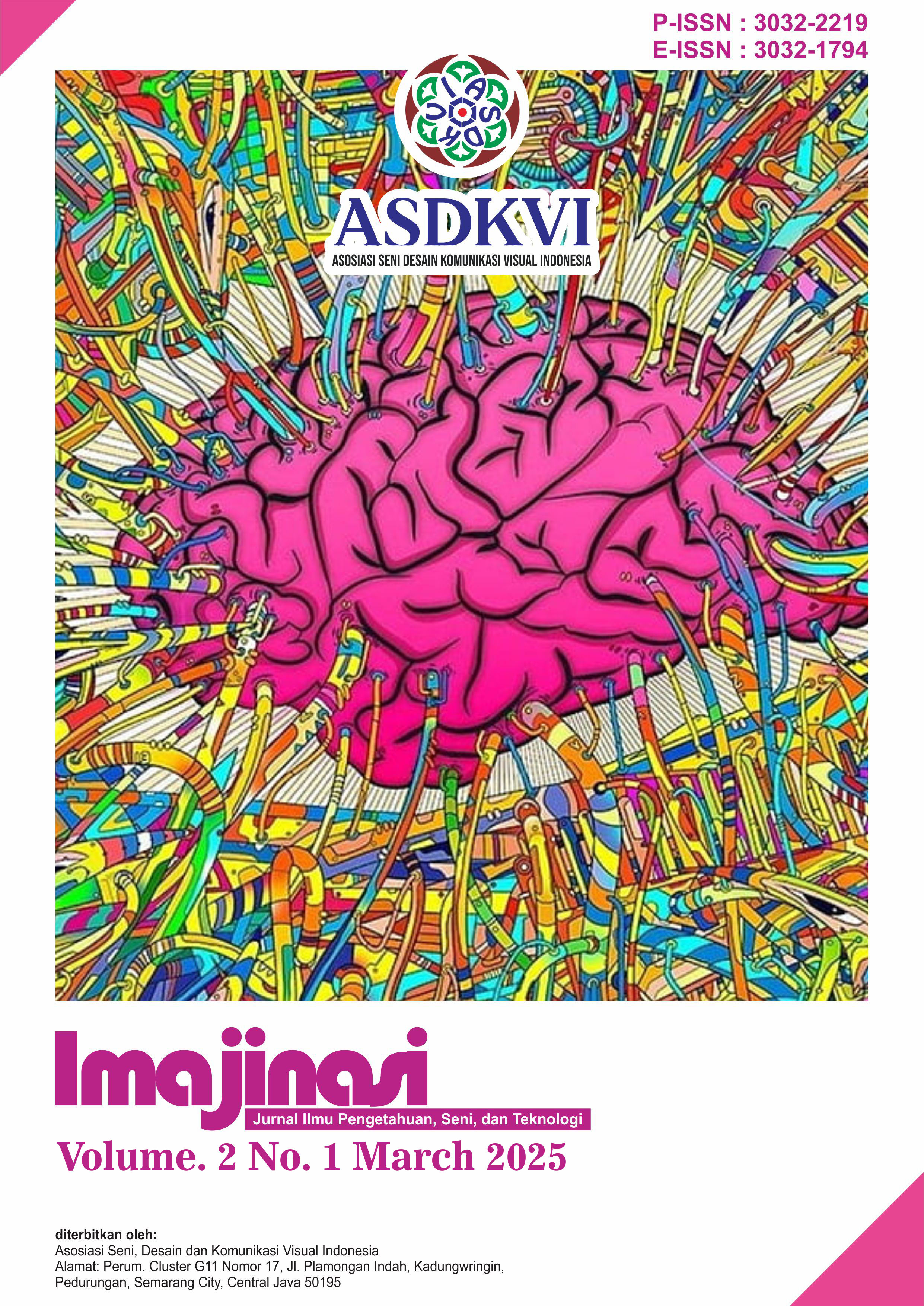Implementasi Pembelajaran Seni Tari pada Anak Tunarungu Menggunakan Model Project Based Learning di Sekolah Luar Biasa Tamansari Kota Tasikmalaya
DOI:
https://doi.org/10.62383/imajinasi.v2i1.561Keywords:
Dance Arts Learning, Deaf Children, Project Based Learning.Abstract
Learning dance for deaf children faces unique challenges due to their hearing limitations in understanding rhythm and movement. To overcome this, an exploration-based approach and direct experience are needed. This study aims to analyze the implementation of dance learning for deaf children using the Project Based Learning model at SLB Negeri Tamansari, Tasikmalaya City to improve understanding of dance concepts, movement understanding, rhythm coordination, teamwork, and responses to learning using a scientific approach with five main steps, namely observing, asking, reasoning, trying, communicating. This study uses a qualitative descriptive method with observation, interview, and documentation techniques. The subjects of the study were deaf students who took part in dance learning, from movement exploration to the final performance. This model allows them to learn actively, build understanding through direct practice, and develop creativity in performing dance. The results of the study showed that the implementation of Project Based Learning succeeded in improving the dance skills of deaf students. The use of hand clapping instructions and teacher types made it easier to understand rhythm. Repeated practice helps them adjust their movements to the tempo, while the performance increases their confidence and expression.
References
Anggraeni, D., et al. (2019). Pengaruh pendekatan saintifik dalam pembelajaran seni tari. Jakarta: Penerbit Akademika.
Creswell, J. W. (2014). Research design: Qualitative, quantitative, and mixed methods approaches. SAGE Publications.
Daryanto. (2013). Pendekatan saintifik dalam pembelajaran. Bandung: CV Yrama Widya.
Hidayati, N. (2021). Pendidikan seni tari untuk anak berkebutuhan khusus. Jakarta: Kencana.
Kurikulum 2013. (2013). Kementerian Pendidikan dan Kebudayaan Republik Indonesia.
Piaget, J. (1952). The origins of intelligence in children. Norton.
Piaget, J. (1970). Theories of cognitive development. New York: Basic Books.
Raihanurrahmi, N., et al. (2017). Pendidikan seni tari bagi anak berkebutuhan khusus. Yogyakarta: Pustaka Pelajar.
Slavin, R. E. (2015). Cooperative learning: Theory, research, and practice. Boston: Allyn & Bacon.
Sugiyanto, R. (2019). Model pembelajaran berbasis proyek dalam pengajaran seni tari untuk anak berkebutuhan khusus.
Suryadi, B., & Fitria, L. (2019). Pendekatan multisensori dalam pembelajaran tari bagi anak tunarungu.
Sutrisno, H. (2021). Implementasi pendidikan inklusif dalam pembelajaran seni di sekolah luar biasa.
Trianto, S. (2017). Pembelajaran berbasis proyek: Konsep dan implementasi dalam Kurikulum 2013. Jakarta: Kencana.
Trianto. (2017). Model pembelajaran inovatif berbasis proyek. Jakarta: Penerbit Prestasi Pustaka.
Undang-Undang Pendidikan Nasional. (2003). Undang-Undang Republik Indonesia Nomor 20 Tahun 2003 tentang Sistem Pendidikan Nasional. Jakarta: Depdiknas.
Widodo, A. (2020). Model pembelajaran berbasis proyek dalam pengajaran seni tari untuk anak berkebutuhan khusus.
Downloads
Published
How to Cite
Issue
Section
License
Copyright (c) 2025 Imajinasi : Jurnal Ilmu Pengetahuan, Seni, dan Teknologi

This work is licensed under a Creative Commons Attribution-ShareAlike 4.0 International License.





